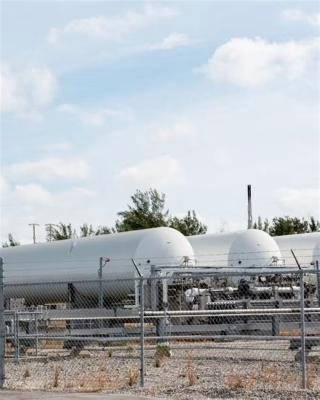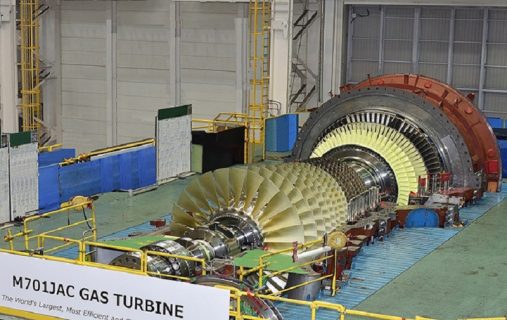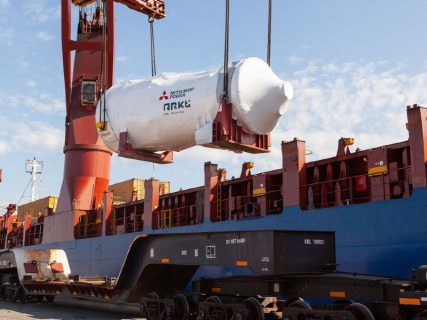The Marlim Azul Power Plant represents Brazil’s first thermoelectric facility to generate electricity using natural gas sourced from the country’s pre-salt offshore reserves. Located in Macaé, Rio de Janeiro, the 565 MW combined-cycle plant integrates advanced gas turbine technology and power generation systems to convert pre-salt associated gas into reliable grid power. Spearheading its development was a Patria Investments, Shell Brasil, and Mitsubishi Power joint venture. Marlim Azul’s strive to advance Brazil’s energy supply is also backed by other projects such as the CELBA 2 Barcarena power plant.
Marlim Azul Power Plant Project Factsheet
Project Name: Marlim Azul Thermoelectric Power Plant (UTE Marlim Azul Energia)
Location: Macaé, Rio de Janeiro, Brazil
Developers: Patria Investments (50.1 %), Shell Brasil (29.9 %), Mitsubishi Power (20 %)
Project Type: Combined-cycle gas turbine (CCGT)
Installed Capacity: 565 MW
Fuel Source: Pre-salt offshore reserves (associated gas supplied by Shell Brasil)
Key Equipment Used: Mitsubishi M501JAC gas turbine
Efficiency: More than 64 % combined-cycle efficiency under optimal conditions
Hydrogen Capability: Designed for up to 30 % hydrogen co-firing
Cost: Approx. BRL 2.5 billion
Financing: BRL 2 billion long-term loan from Brazil’s National Development Bank (BNDES)
Energy Supply: Electricity for over 2 million households
Status: Operational since late 2023

Marlim Azul Power Plant in Brazil To Begin Commercial Operations
Reported October 10, 2023 – Brazil’s Marlim Azul thermoelectric plant will begin commercial operations later this year (2023). This was recently revealed by the Pátria Investimentos, Shell and Mitsubishi Power JV. The project is currently in its final testing phase.
Marlim Azul Power Plant Project Overview
Marlim Azul Power Plant is also known as Usina Termelétrica Marlim Azul or Vale Azul. It is a 565MW gas-fired power facility that is under construction within the Macaé Logistics and Industrial Complex. The complex is located in the municipality of Macaé, approximately 200km north of the city of Rio de Janeiro, Brazil. It is in close proximity to the Cabiunas Terminal (Tecab).
The project was developed by Marlim Azul Energia. The latter is a joint venture (JV) between Mitsubishi Power, Royal Dutch Shell plc (Shell), and Patria Investments (Patria), where Patria holds 50.1% interest while Shell and Mitsubishi Power own 29.9% and 20%, respectively.
Marlim Azul Power Plant Components
The Marlim Azul Power Plant, with a construction cost of which is approximately US$ 600M, will be powered by Mitsubishi’s M501JAC. This is an air-cooled gas turbine that was launched in 2012.
Also Read: Barakah nuclear power plant project timeline and all you need to know
Weighing 347t, the M501JAC gas turbine also has a rotational speed of 3,600 rpm. It provides a maximum power generating capacity of 435MW in simple-cycle and 630MW in combined-cycle operation. According to the manufacturer, it also provides the lowest carbon emissions per unit of power.
Other than the turbine, which reaches efficiency of more than 64% and a reliability rate of 99.6%, the Marlim Azul Power Plant also has other components. These include a steam turbine, generator, boiler, cooling towers, gas station, and water treatment facility.

Upon completion, the Marlim Azul Power Plant will generate enough electricity to meet the electricity needs of more than two million Brazilian households. It will utilize natural gas supplied by Shell Brasil Petroleo, a Brazilian subsidiary of Shell, from its deep-water pre-salt basin operations, situated in offshore Brazil.
The gas produced will be supplied through a 20km-long gas pipeline from the Cabiunas Onshore Terminal (Tecab). The terminal receives natural gas from the pre-salt through the Route 2 sub-sea natural gas pipeline.
Marlim Azul Power Plant Project Team
The Marlim Azul Power Plant project is financed by Brazil’s National Bank for Economic and Social Development (BNDES).
Cobra Group is the project engineering, procurement, and construction (EPC) contractor overseeing the plant’s testing and commissioning services. Mitsubishi Hitachi Power Systems (MHPS) will manufacture, supply, and install turbines along with the ancillary equipment. Mitsubishi will also maintain and service the facility for 25 years.
Macoga Group on the other hand will supply dog bone expansion joints to serve as a flexible connection between the turbines and condensers. Zhengzhou Boiler Group will manufacture and supply the boiler equipment. Complastec Company assembled the high-density polyethene (HDPE) pipes required for the project while Empresa Brasileira de Terraplanagem e Engenharia (EBTE) carried out earthworks at the Marlim Azul Power Plant construction site.
Lastly, Entrepose Intech was selected for the construction of the gas pipeline connecting Tecab to the power plant.
Marlim Azul Power Plant Project Timeline
Marlim Azul Power Plant was originally proposed to be developed by Vale Azul Energia and Mitsubishi Hitachi Power Systems. This was under project name, Vale Azul II. However, Vale Azul Energia, sold its stake in the project, as well as the environmental license, to Marlim Azul Energia, which led to the rename.
The facility is also one of the projects that Brazil’s energy regulator, National Electrical Energy Agency (ANEEL), selected in an auction for power purchase in December 2017.
Timeline Overview
2017
Project awarded during Brazil’s A-6 energy auction. Rights secured to develop a gas-fired plant using pre-salt natural gas.
2018
Joint venture formed among Patria Investments, Shell Brasil, and Mitsubishi Hitachi Power Systems (now Mitsubishi Power).
2019
Marlim Azul Energia secured financing for the project from Brazil’s state-owned bank, Banco Nacional de Desenvolvimento Economico e Social (BNDES).
2020-2021
Civil works and turbine installation advances. Mitsubishi also ships M501JAC gas turbine to the project site in Macaé.
June 2021

August 2021
Generator arrives at the project site. The combined-cycle gas turbine (CCGT) power plant entered the equipment installation phase.
2022
Combined-cycle integration and grid connection testing proceedes.
Late 2023
Plant commissioned and begins operations. Marking the first generation of power from Brazil’s pre-salt gas resources.
2024 onward
Operational optimization and readiness for hydrogen blending in future fuel transitions.

